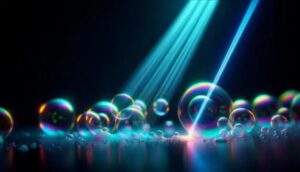The laser industry may face new challenges!
Laser has been developing rapidly in recent years, and various new laser equipment and technologies are emerging one after another. The laser industry is becoming an industry where major companies are actively deploying. How companies can quickly keep up with the pace of laser technology development and how to anchor the future development direction is something that must be considered. , is also a question that the 2024 World Laser Industry Conference and the World Laser Industry Exhibition want to explore and answer.
Among them, scholars and experts who will attend laser conferences and exhibitions are currently focusing on the proposition of turning soapy water into laser, believing that this field has great potential.
Scientists have discovered that the glare on bubbles made of soapy water and fluorescent dyes turns them into tiny lasers that can act as pressure sensors. Lasers produce light through a process of light amplification, in which the passage of photons through a medium stimulates the emission of more photons.
In this way, it is easy to understand that the main components of a laser are the medium that amplifies the light, and the optical feedback process that sends the same photon through the medium multiple times. Surprisingly, soap bubbles meet all of these criteria.
In the experiment, carried out by a team of researchers from the University of Ljubljana, the internal volume of bubbles - some of which were less than half a millimeter in diameter and others several centimeters in diameter - was used to build a cavity. To amplify the light, the scientists added a fluorescent dye to the mixture that glows when illuminated.
Finally, the researchers directed light from the optical fiber into the bubble through a focusing lens, causing the bubble to generate its own laser. The scientists were able to create optical feedback by sending laser light into the bubble, trapping the light in a kind of ring as it was repeatedly reflected back to the inner surface.
According to this statement, any soap bubble will be used to obtain a small laser. "We use regular soap or mixtures that we can easily buy for children. Then adding a small amount of fluorescent dye is enough," explains Matjaž Humar from the University of Ljubljana in Slovenia.
The 2024 Laser Conference Organizing Committee also learned that the team had tried to use liquid crystals instead of soap, which would make the laser more stable and have a longer life. This also gives scientists confidence that they can be turned into pressure sensors.
There is no doubt that this new discovery will promote the development of the laser industry. There are still many unknowns in the laser industry chain waiting for us to explore, and we are full of expectations.








